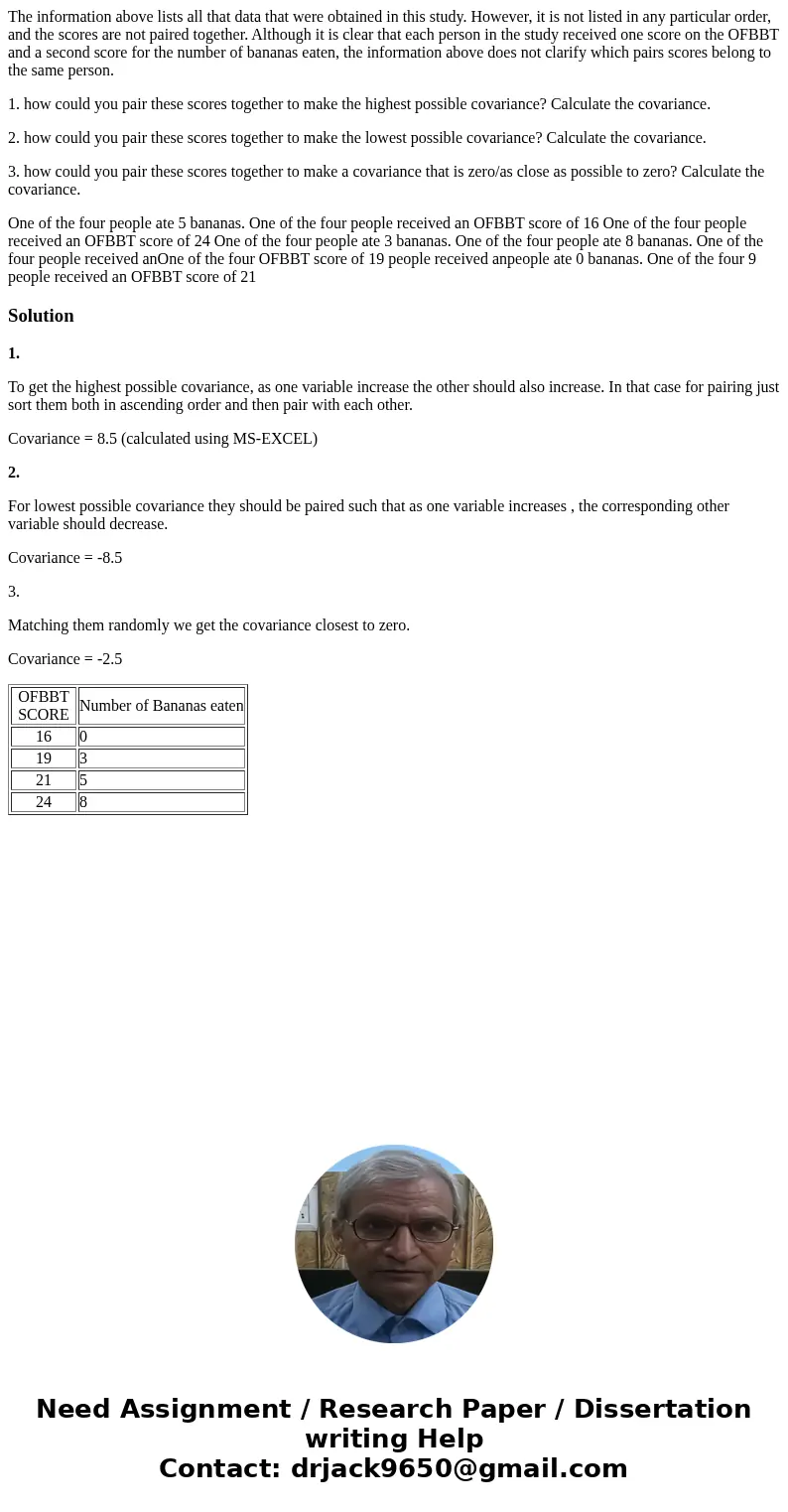The information above lists all that data that were obtained
The information above lists all that data that were obtained in this study. However, it is not listed in any particular order, and the scores are not paired together. Although it is clear that each person in the study received one score on the OFBBT and a second score for the number of bananas eaten, the information above does not clarify which pairs scores belong to the same person.
1. how could you pair these scores together to make the highest possible covariance? Calculate the covariance.
2. how could you pair these scores together to make the lowest possible covariance? Calculate the covariance.
3. how could you pair these scores together to make a covariance that is zero/as close as possible to zero? Calculate the covariance.
One of the four people ate 5 bananas. One of the four people received an OFBBT score of 16 One of the four people received an OFBBT score of 24 One of the four people ate 3 bananas. One of the four people ate 8 bananas. One of the four people received anOne of the four OFBBT score of 19 people received anpeople ate 0 bananas. One of the four 9 people received an OFBBT score of 21Solution
1.
To get the highest possible covariance, as one variable increase the other should also increase. In that case for pairing just sort them both in ascending order and then pair with each other.
Covariance = 8.5 (calculated using MS-EXCEL)
2.
For lowest possible covariance they should be paired such that as one variable increases , the corresponding other variable should decrease.
Covariance = -8.5
3.
Matching them randomly we get the covariance closest to zero.
Covariance = -2.5
| OFBBT SCORE | Number of Bananas eaten |
| 16 | 0 |
| 19 | 3 |
| 21 | 5 |
| 24 | 8 |

 Homework Sourse
Homework Sourse